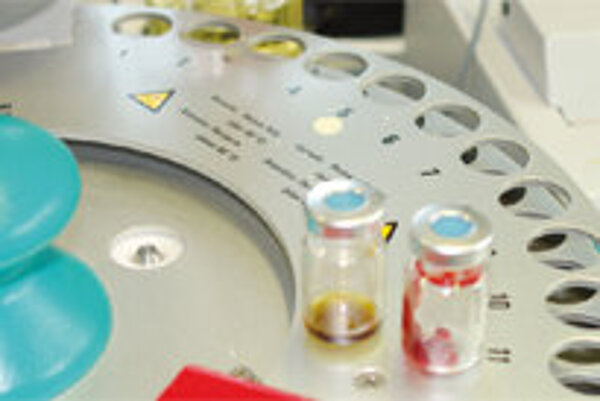Water determination, Karl Fischer titration
Too much water in the grease can cause corrosion and bearing damage. Cavitation can occur at points with high relative movement. If there is too much water or if water penetrates continuously, relubrication must be carried out more frequently. If a grease does not withstand the water, it may become soft or soupy and then washed out.
The amount of water in a grease sample is determined exactly in ppm (mg/kg) using the Karl Fischer method, as with oil. To do this, the water must be "expelled" from the sample. While in the case of an oil the water is evaporated from the sealed sample by heating up to 140 °C, this "boiling out" is much more difficult in the case of a grease. In this case, the water must be slowly dissolved out at 120 °C. The water is fed with nitrogen via a hollow needle into a titration vessel. Here it reacts electrochemically with a special Karl Fischer solution. The water content can be precisely specified via the inflection point of the titration curve.

Meaning of the Karl Fischer water determination
- If a grease is contaminated with too much water, its origin must be traced and eliminated. The Karl Fischer method detects water quantitatively. The elements determined by atomic emission spectroscopy help to distinguish between condensate or tap water.
- If, in contrast to the fresh grease sample, the used lubricant is contaminated with sodium, calcium, potassium or magnesium, this indicates "hard" water. It may have penetrated during high-pressure cleaning, for example. If these minerals are not present, it is "soft" rainwater or condensation water.
- If the water has been insufficiently removed during the production of a grease, it may also be present in the fresh grease. An analysis of fresh and used grease provides clarity.



